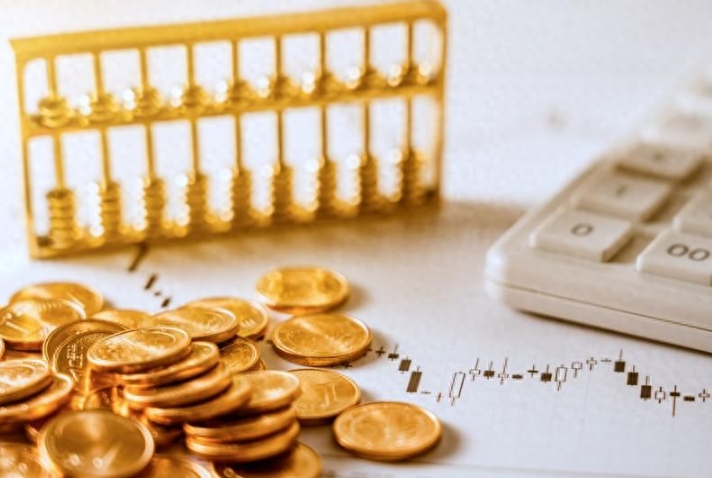Gold Prices Boosted by Safe-Haven Demand
Advertisements
The landscape of global finance is currently shaped by a myriad of factors, with inflationary pressures in Europe standing out as a primary concern. Market analysts, such as Sam Coventry, are paying close attention to the European Central Bank (ECB) as it convenes on December 12. With inflation stubbornly persisting in Eurozone countries like Germany, there's speculation that the ECB may cut interest rates by a conventional 25 basis points during its next meeting. This prospect is especially significant given the ongoing shifts in the economic horizon where inflation metrics are of paramount interest for policymakers.
In times of economic turbulence, risk aversion becomes a critical driver of investor behavior. The current global economic recovery is far from smooth, riddled with obstacles such as the U.S. debt ceiling debacle, ongoing energy crises in Europe, and a deceleration in China's economic growth. As uncertainty looms large, gold has firmly established itself as a favored safe-haven asset. Its allure lies not only in its intrinsic value but also in its universal acceptance, offering stability when other markets falter. The gold market has seen a surge in demand, as investors seek refuge in a tangible asset amidst the increasingly tumultuous economic environment.
The holiday season also casts a shadow on market activity, particularly evident during the Thanksgiving period in the United States. Traditionally characterized by lower trading volumes, this period did not translate into a depreciation of gold prices. On the contrary, as markets emerge from the holiday lull, gold could experience a rebalancing with greater volatility on the horizon. Investors must remain vigilant during this time, closely monitoring key economic indicators from major economies and deciphering their potential impact on gold prices.

According to economist Salomon Fiedler from Berenberg Bank, there's heightened scrutiny over wage growth and its implications on inflated service prices—an area where labor costs hold significant sway. Recent weeks have witnessed the euro struggling, partly due to traders speculating that the ECB may pursue a more aggressive stance on rate cuts compared to the U.S. Federal Reserve and the Bank of England. The inflation data to be released could either reinforce or temper these expectations, underscoring that while the ECB is contemplating a shift in policy, it is yet to commit fully to substantial rate cuts which could exacerbate inflationary pressures further.
In light of the November inflation figures from Germany, Fiedler articulates a steadfast projection for the eurozone's monetary policy—predicting three successive 25 basis point reductions in the ECB's benchmark rate, which would subsequently settle around a deposit rate of 2.5%. This ongoing dialogue surrounding monetary policy is a vital consideration for investors, particularly those seeking to navigate the complexities of the gold market.
The dynamics of gold prices are influenced by more than just flight-to-safety investment patterns. Recently, the postponement of the OPEC+ meeting has added another layer to the intricacies of the commodity markets. As a coalition of major oil-producing nations, OPEC+ decisions hold significant sway over global energy prices, which, in turn, ripple through to the gold market. The highly intertwined relationship between oil prices and gold is pronounced, especially in an era marked by energy supply challenges. Fluctuating crude oil prices can indirectly bolster gold demand, prompting investors to recalibrate their portfolios in alignment with shifting supply-demand structures.
While gold prices currently hover at elevated levels, it’s essential to recognize that market trends can oscillate dramatically. Investors must possess agility in adjusting their investment strategies amid macroeconomic changes. Engaging with both short-term trading opportunities and long-term asset allocation strategies are vital for navigating investments effectively. A keen understanding of market trajectories and underlying macroeconomic variables plays an instrumental role in shaping these decisions.
The interplay of risk aversion also hinges on the shifting tides of monetary policies across nations. For instance, the recent tightening of policies in the U.S., marked by increased interest rates, has generated considerable ripples in the markets. The robust dollar has positioned gold as a hedge against U.S. currency depreciation, drawing a wave of new investors to the sector. Such shifts highlight the necessity for investors to stay ahead of monetary policy adjustments as they unravel the implications for gold price movements.
In the shadow of cautious market sentiment, diversification emerges as a prudent practice for risk mitigation. A balanced portfolio comprising gold, oil, equities, and bonds can help shield against the inherent risks associated with individual asset volatility. The muted trading atmosphere during the Thanksgiving holiday may have provided temporary stability, yet it’s critical to contextualize this within the broader perspective of market behavior post-holiday. As activities ramp back up, the potential for adjustments in gold prices remains significant.
Conversely, the delay in the OPEC+ meeting has captured market attention, influencing projections regarding oil supply and pricing. This development injects uncertainty into global energy pricing, bearing implications that extend to other commodity markets. Gold, often seen as a safe harbor during economic turbulence, finds itself closely tethered to the vicissitudes of the oil market. Rising energy prices typically correlate with buoyant gold prices, particularly amid escalating inflationary pressures where gold can serve as a protective asset.
Ultimately, the OPEC+ postponement may exacerbate existing tensions within the oil supply landscape. As crude oil prices remain vulnerable to fluctuations, gold price strengths could follow suit. However, in a longer-term view, a gradual recovery in global economic conditions could present fresh challenges for gold prices. If inflation expectations stabilize and economies begin to rebound, the attractiveness of gold as a safe-haven asset may wane, concurrently unlocking new avenues for investment.
In conclusion, tracking the trajectory of gold prices requires a nuanced comprehension of various interrelated factors including inflation rates, monetary policies, geopolitical developments, and the dynamics within energy markets. Investors must remain adaptable and perceptive to market shifts and trends, paving the way for informed decisions in a landscape that is anything but static.
Post Comment